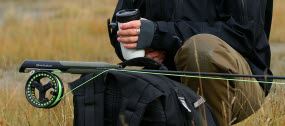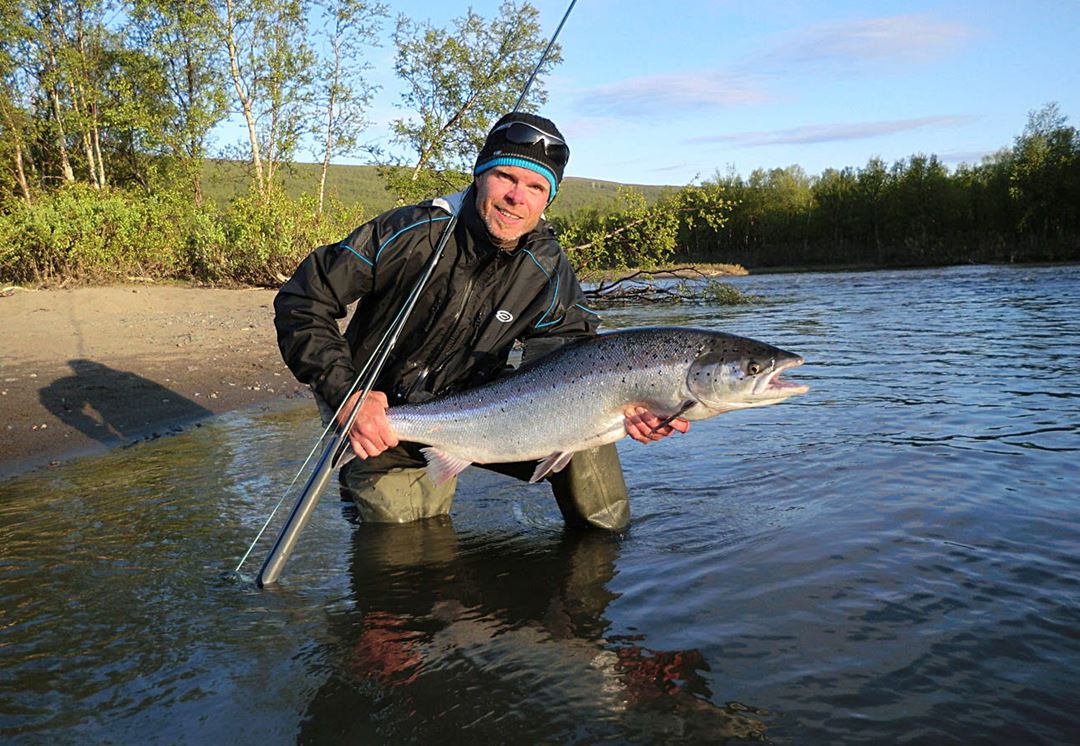The silhouette against the sky is the same as it’s been ever since the Norwegian rivers were invaded by affluent British salmon fishermen in the 1800s. The fly rod which is the brain-child of Robert Selfors from Nesodden outside Oslo also bends into the shape of a rainbow when a fish is being played.
However, one important detail distinguishes the newly-developed rod from all previous fly rods. The innovation is a new handle, developed mainly to enable the angler to achieve the casting length he wants with less physical effort.
“I found the recipe in the laws of physics,” says Selfors.
Unchanged for 100 years
The keen fly fisherman got the idea some years ago. Since then, material scientists from SINTEF – the largest independent research organisation in Scandinavia – and industrial designers from Permafrost Design Studio in Oslo have helped him make his idea a reality.
The first step into the world market will be the launch of the new rod at a road show for anglers in the United States next year. Here, potential customers from 120 American cities will have the opportunity to see demonstrations of the product on film. The Norwegian’s starting point is that the fly rod has not changed its appearance for 100 years.
Hollow handle
When Selfors explains the principles of his invention, he begins with a quick course in fly fishing physics:
- A fly rod is charged with energy by the flexing it undergoes in the casting action.
- The more the rod can be flexed, the more energy it can store.
- The greatest energy storage potential is in the lowest part of the rod. With conventional handles, some of this potential energy remains unused, because existing handles are built up from cork attached using glue, which reduces flexibility.
- In other words, the part of the rod whose flexibility is of greatest importance for energy storage is too rigid.
Robert Selfors’s answer to this was to spend long evenings designing a hollow handle. It has a hollow cavity in which the rod “blank” can move freely. This has been the core design concept throughout subsequent development work.
Arm injury

|
|
The difference between the new fly rod and previous ones is its hollow handle, which lets the rod blank flex freely. According to anglers who have tested it, this means long casts with less use of force. Photo: Robert Selfors |
This summer, prototypes of the rod have been tested by Norwegian fly fishermen. According to the inventor, the main feedback has been that the new rods allow long casts – using less physical force than before.
Ergonomics is thus one of the key words associated with the concept. This may appear a popular idea, but for Robert Selfors and his pioneering company, ArcticSilver, it’s about more than fashion and trends.
The idea for the new rod actually came to the inventor as a result of a strain injury to his arm caused by thousands of casts using traditional fishing tackle.
Selfors was born and bred in the district of Salten in Northern Norway and has been a fly fisherman for many years. He is a graphic designer by profession. Six years ago he experienced serious tendonitis in his right arm. He believes the condition was caused by the strain of using both a computer mouse and his fishing rods.
“What we have developed is not a fishing rod for people with disabilities or muscle and joint ailments, but my own pain started me looking at the function and design of the fly rod in a new light,” says Selfors.
Likens it to carving skis
The inventor has already been asked if the new rod isn’t just a new version of the Emperor’s New Clothes. He replies by making a comparison with carving skis – the innovation which made its entry on the downhill ski slopes some years ago and made turning much simpler.
“Carving skis are a very simple innovation. By making use of the laws of physics, they have completely changed people’s experience of downhill skiing. We have also made a simple change and test users have reported that the rod feels very good.”
Even though the change was simple, making the product a reality wasn’t just a matter of “full steam ahead”.
Material selection and design
“We had no knowledge of what materials would be most suitable for manufacturing. We also needed somebody to help us with load testing. That’s why we contacted SINTEF.”
From its Oslo office, SINTEF contributed with its material selection and design expertise to the development of the new handle. The research group also helped adapt the design for manufacturing. Åge G. Larsen at SINTEF Materials and Chemistry was project manager. He is a keen fly fisherman himself.
“The design was based on innovative testing. We attached a spring balance to the end of the rod and pulled until the curve of the rod reflected our wildest fishing fantasies,” Larsen recalls.
Slightly behind schedule
Pioneer Robert Selfors had hoped to have the first rods ready for sale before the end of this year’s fly fishing season in Scandinavia, but there has been a slight delay.
“The first 500 rods have already been manufactured. We are now making some cosmetic adjustments to the material that the handle is to be sprayed with to provide a secure grip, also when it is wet.”
The production of rod blanks and handles will take place abroad, as will the assembly of the finished rods.
“However, I have other plans for innovations in the field of fly fishing, and development work will take place in Norway and hopefully create jobs here,” says Robert Selfors.
By Svein Tønseth

